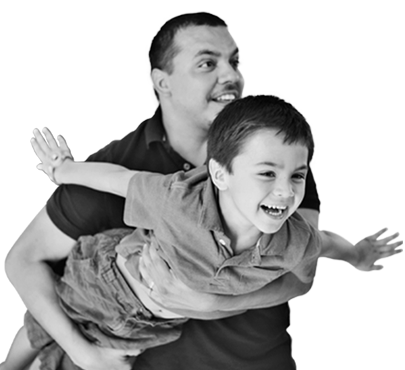Alternative Forms of Communication

Alternative Forms of Communication
Written by OUR Speech and Language SERVICES Team
We are all able to communicate one way or another. For example, a baby cries when they are hungry or is tired, a child throws a tantrum because they need something but can’t put it in words, a person jumps and shrieks because they are happy or excited. Most of us are able to verbally communicate with others, which is the most common way of expression when interacting, but for some people, communication is a challenge and functional communication skills have to be taught. Communication is often one of the areas where people who have autism struggle. Some have the ability to eventually speak or use their verbal skills to have a meaningful two-way conversation, or they can use alternative ways to communicate, such as an augmentative communication device, sign language, writing/typing, or using picture cards.
At our clinics, we work with the individual and the family to identify what will be needed to be successful in their progress. We begin with assessing the client and family and set goals customized to individual needs.
When we meet a person whose form of communication is so delayed that it is prohibiting from the most basic interaction with others, we will first assess can how they can best communicate their wants and needs and find that motivating item. From there we focus on building joint attention, really focusing on engagement. Beginning forms of communication might look like gestures such as pointing and/or leading the listener to the desired item. Many times, people build on these gestures by introducing pictures that then correspond with the motivating items. A well-known approach of picture communication is referred to as Picture Exchange Communication System (PECS). This method is frequently used in school and therapy settings, where the therapists and teachers may create a binder filled with a variety of pictures that the communicator might need. An alternative to having a binder is having a group of picture icons on a string, such as a breakaway chord, that the communicator has access to. You can use simple pictures you take with your phone and print to have specific images that the communicator needs, or generic images from the internet. The PECS website has lots of information, training videos, and kits you can purchase and download for a comprehensive collection. Some of the common pictures we print are images of preferred snacks, such as Goldfish, fruit snacks, applesauce, or pictures of favorite activities such as playground, games, or swings. We also always include images to communicate the need for a drink, a bathroom break, and a sensory break. We want to make sure that the communicator has access to any communication they need to have their needs met.
Another great alternative way to communicate is through the use of an Alternative and Augmentative Communication device, or AAC device. This is a computerized device such as a tablet or iPad that has software allowing the user to select pictures or words on a screen that will then be spoken by the device. There are many software programs options, but two of the more popular ones are LAMP or TouchChat. In Arizona, the cost of the device and the software may be fully covered if the individual is eligible for Medicaid funding through their DDD Health Plan. Some private medical insurance plans may also cover some or all of the cost pending an evaluation demonstrating a need and benefit from an AAC device. During this evaluation, the right type of device will also be chosen with the help of a Speech and Language Pathologist and/or Occupational Therapist. The device can be used to supplement existing language, or to “be” the communicators voice entirely. The software is programmable and customizable so that the user can choose what voice they want to use, as well as to choose images that are meaningful to them. This is a tool that can grow with the user over their lifetime. As speech therapists, we love working with AAC devices with our clients. Depending on their level of ability, we can start with fewer images in order to help them understand the correlation between touching an image and communicating that word. We see our clients grow their vocabulary quickly and often become quite proficient at communicating this way. Click this link with more information and scroll to the bottom to watch a video of a man who has been using an AAC device to communicate for 25 years. It’s quite inspirational!
Contact our Family Support Team if you would like to learn how to get started with Speech and Language Therapy or any other programs and services that we offer. Our Family Support Team is always available to help and is available at no charge to all members of the autism and developmental disability community. Schedule a free phone appointment that works with your schedule by visiting azaunited.org/supportcall
You may also be interested in:
For more helpful resources and information, follow AZA United on social media:





